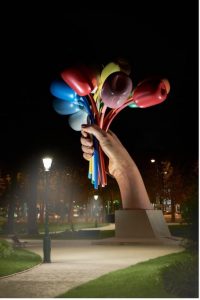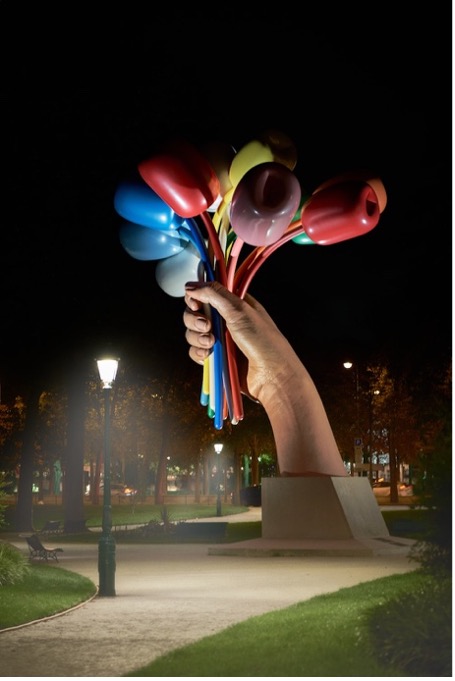When parents send their kids off to college, they often wish for them to grow as people, have fun, and (perhaps most importantly) major in something that will get them a job. Neuroscience, data science, and finance are the coveted majors – not theatre, communications, or (my personal favorite) art history. I pursued an art history minor in undergrad where I was first exposed to intellectual property law through my Fakes and Forgeries class. This course primarily focused on ownership and authenticity in visual art. It also touched on how copyright and trademark law intersect in the art world. In particular, our discussion of the Rogers v. Koons case piqued my interest in wanting to learn more about how modern copyright law protects artists.
For most of the class, we talked about what it means to “create” a piece of art. Does it mean that it must be an individual idea entirely? Or can a creative work encompass the past efforts of others? Ultimately, we never came to a decisive resolution. Some were in the individualist camp. Others saw no problem with an artist using another artist’s work in part. For a while, I was unsure of where I fell. But when we discussed the Rogers v. Koons case, I had my Eureka moment. The case highlighted how the art world today is very different from 19th century art academies. Artists today compete in a globalized, digitalized world. It is easy to come across the work of someone else and appropriate it. However, as I learned from the case, when intellectual property law is in place, an artist’s labor does not go unnoticed.
The Roger-Koons Showdown
Jeff Koons is an American contemporary artist widely known for making art with references to popular culture and everyday objects. Supporters view his work as having great art historical significance. Meanwhile, critics often describe it as kitsch, gratuitous or overly-eccentric. Some of his notable works include Balloon Dog, a stainless steel, large-scale balloon dog sculpture, and Rabbit, a sculpture that sold for $91 million at auction. Though financially successful, Koons has remained a controversial figure. Some see him as a creative genius while others view his work as mere appropriation of others’ works. He is accused of appropriation because many of his works simply recontextualize images or pieces of others without making a transformative change to them.
My Fakes and Forgeries class grappled with this question by studying Koons’ String of Puppies. String of Puppies is a sculpture of a man and a woman in garish orange shirts holding several purple puppies in their arms. Koons used a postcard by photographer Art Rogers entitled Puppies for the work’s inspiration. The photograph features a man and a woman sitting side-by-side holding several puppies. The face shape, hair, clothing, and positioning of the people and puppies are nearly identical from the postcard to the sculpture.
My classmates and I tried to make arguments for and against Koons being an artistic inventor as opposed to a thief. Some classmates found the recontextualization to be an artistic action and thought Koons had done nothing wrong. I, however, found great difficulty in giving Koons a free pass. I felt that all he had done was turn a 2-dimensional composition into a 3-dimensional one and added color. To me, Koons had profited and gained recognition for something that he merely modified rather than created himself. I found sympathy for Rogers and wanted him to find recourse. Luckily, he eventually did bring a successful copyright infringement suit.

How Rogers v. Koons Pushed Me to IP
Our discussion of this case and the class more generally exposed me to a legal world that I hadn’t realized existed. I had heard of intellectual property law before but didn’t really know what it entailed. I did not realize that visual works, music, videos, logos, brand names, and so many other things are all touched by various subsections of IP. The Rogers case introduced the reality that some peoples’ entire jobs revolve around advocating for the rights of creators. Lawyers are not just what you see on TV or hear about in true crime podcasts. Lawyers play a role in creative spaces as well. This exposure is what led me to law school and has pushed me to find opportunities to engage with intellectual property law.
One such opportunity has been through my spring semester coursework. Loyola allows all 1Ls to take an elective class during their spring semester. I chose to take a class focused on how patents on drugs impact global access to affordable medicine. Through this experience, I have learned more about what patents are, how they are granted, and how competing perspectives on patents can influence a country’s patent laws. As someone without a science background, the class was a great opportunity to learn about other parts of intellectual property law beyond the little bit I learned in my undergraduate class.
Additionally, Loyola offers an IP survey course as well as an introductory course to art law. As I take these courses and continue throughout law school, I hope to learn more about the intersection of intellectual property law and the art world. One day I may be involved in protecting the rights and interests of artists!

Meredith Wickenheiser
Assistant Blogger
Loyola University Chicago School of Law, J.D. 2025
